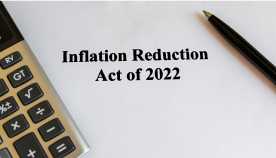AARP Eye Center
CLOSE ×
Search
Popular Searches
- right_container
- Health
- Money
- Work & Jobs
- Social Security
- Medicare
- Caregiving
- Games
- Travel
- More...
- Entertainment & Style
- Family & Relationships
- Personal Tech
- Home & Living
- Auto
- Staying Sharp
- Podcasts
- Videos
Within a decade, the U.S. population will consist of more adults over 65 than children under 18. To prepare for rapid population aging, Age-friendly Community (AFC) programs across the country are helping towns, cities, counties, and states transform their communities into great places to grow up…
“If it wasn’t for SNAP, I don’t know what we would do.” – 61-year-old AARP survey participant
As states and communities continue to recover from the devastation caused by Hurricanes Helene and Milton, many are left wondering what could be done to prevent large-scale destruction from such disasters. Despite the severity of those storms, they were only the most recent among several to sweep…
The recommended age for colorectal cancer screening has been lowered to 45 by the USPSTF.
The COVID-19 pandemic has highlighted labor market inequities. A growing body of research shows how much the economy stands to gain from addressing them.
Presumptive eligibility expands consumer choice and can empower consumers to access public funded home and community-based services without lengthy determination delays.
The pandemic has highlighted longstanding gaps in bank account access and ownership for older adults.
While the deployment of vaccines in nursing homes has largely been a success thus far, facilities are far from finishing this task. They must now enter a next phase of vaccination and confront a new set of issues.
Temporary jobs, usually the first to be added at the beginning of economic recoveries, are now rising. Older jobseekers trying to reenter the job market may view temporary jobs as an onramp back into employment.
Recent federal actions improve access to affordable health insurance.
A payment pause and expanded employer assistance help some borrowers tackle their student loans, although others are left out.
Student loan debt was never meant to last a lifetime or become a threat to retirement security. Yet today, borrowers frequently wind up carrying it into retirement, long beyond their working years.
Many of the trends that informed predictions about the future US workforce have reversed during the pandemic. Now economists wonder how workers across multiple generations will bear the pandemic's effects into the next decade.
Search AARP Blogs
Recent Posts


































































